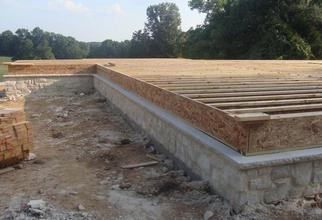When you want to learn more about foundations, start with the basics by exploring the different types. There are four main types to learn more about. All of these have their own advantages, so it ultimately depends on what you want to get out of your home foundation.
Crawlspace Foundation
If you simply want to elevate your home one to two feet from the ground, a crawlspace foundation is one to consider. If you live in a moist climate, this foundation type of preferable since water collecting at ground level will not be able to get into your home. An area that often experiences minor flooding could also benefit from this foundation type since there is space between the ground and the floor of your home. While there is a slightly higher risk for fungi and mold accumulation, this foundation type tends to resist termite infestation well.
Basement Foundation
You generally begin with a hole about eight feet in depth when building with this foundation. Cinder blocks are typically used to create the wall around the basement. It is important that the process is precise to ensure that it is waterproof. A basement foundation adds square footage to your house, allowing you additional living space or storage space if you need it. This type of foundation also tends to be incredibly durable. It offers a high level of resistance to extreme weather conditions and disasters, such as a house fire.
Slab Foundation
This is probably the simplest of all of the foundation types. It is just a slab of concrete at the home site that is poured into the ground. It is flat and resembles a large pad. It takes only a small amount of preparation to get this type of foundation prepped and ready, and the installation process is mostly fast and simple. Beams are typically placed around the perimeter and the foundation goes down about six inches. There is usually steel reinforcing bars and wire mesh in the concrete to ensure that it is durable and stable once the structure is built on top of it.
If you live in a warmer climate, this is ideal. However, in areas where freezing temperatures occur, there is the risk of the slab shifting.
Pier and Beam Foundation
This type of foundation generally starts with concrete piers or wooden posts that go deep enough into the ground to properly support the structure. The height of the posts or piers depends on where someone is building and how elevated they want the home to be. This foundation is generally inexpensive compared to other options, and it is mostly easy to build. However, it is not a good choice if the structure going on top is large or heavy. It should also not be used in areas where hurricanes and earthquakes are common.
Take note of the benefits you get with each of the foundation types. Consider what you are wanting to achieve with your home foundation and see where the matches happen. This is the easiest way to narrow down the choices and make the final decision.


